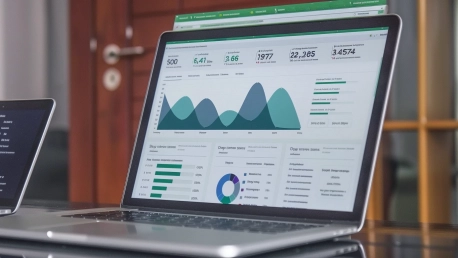Retail is in the midst of a sweeping digital upheaval with pricing software leading the charge. By embracing sophisticated algorithms, artificial intelligence (AI), and deep analytics, these platforms are fundamentally altering the way prices are strategized in retail. The AMA Research & Media LLP report sheds light on how retail pricing software will redefine the market landscape by the year 2030. Let’s delve into the essentials of retail pricing software and its expected impact on the retail market.
The Essential Role of Retail Pricing Software
Understanding Retail Pricing Software
Retailers are recognizing pricing software as a key resource in gaining a competitive edge. This software serves as the backbone of pricing strategy, enabling businesses to navigate complex market conditions with agility. Using predictive analytics and considering factors such as store demographics and consumer behavior, these systems work in tandem with POS software, retail management systems, and retail operations software. This integrated ecosystem is vital for collecting the data that informs dynamic pricing adjustments — a strategic pivot from fixed to fluid pricing that adapts in real-time to market changes.
The Advantages of Automated Pricing
The implementation of automated pricing software stands as a beacon for retail businesses seeking optimization. These advanced systems not only streamline the pricing process but also have the potential to boost profit margins and elevate overall revenue. The shift from manual to automated pricing strategies represents a growing trend toward efficiency and accuracy. By leveraging the power of pricing software, retailers can respond instantly to market trends, competitors’ actions, and inventory levels, ensuring that their pricing strategies are both competitive and profitable.
Technological Evolution and Market Trends
AI and Cloud-Based Advancements
The confluence of AI and cloud technology emerges as a pivotal trend in the evolution of retail pricing software. AI-driven analytics offer predictive insights that help frame optimal pricing strategies, while cloud deployment underscores scalability and on-demand accessibility. These technological advancements signify a break from traditional on-premise solutions, offering retailers a more flexible and cost-effective model. As AI becomes more sophisticated, its predictive capabilities are expected to become more accurate, allowing for pricing strategies that can very well presage market trends and consumer demands.
The Integration Challenges
While the prospects of AI and cloud-based solutions are enticing, they come with their own set of challenges, primarily in data interpretation and application. Retailers may grapple with the intricate analytics provided by pricing software, struggling to distill actionable strategies from them. Addressing these challenges will be crucial for businesses, as the ability to make sense of complex datasets translates directly to the success of automated pricing systems. Clear, actionable insights drawn from data analytics are the keystone in the arch of pricing strategy development.
Market Opportunities and Competitive Landscape
Growth Potential in E-commerce
The flourishing e-commerce sector heralds vast potential for the uptake of retail pricing software. Dynamic pricing is especially pertinent in the online retail context, where price fluctuations are frequent and consumer expectations are shaped by instant access to a global marketplace. E-commerce platforms poised to adopt sophisticated pricing tools will find themselves at an advantage, capable of fine-tuning prices in response to real-time analytics — a strategic component that could well become the standard in the digital shopping experience.
Innovators in the Retail Pricing Software Space
Market leaders such as Retalon, Competera Limited, and Ascential plc are forging paths in the retail pricing software arena. Innovations such as JDA Software’s new dynamic pricing and replenishment solutions, powered by AI and machine learning technologies from Blue Yonder, exemplify the strides being made in pricing optimization and inventory management. These pioneering companies are setting the bar for what is possible, showcasing how technology can be harnessed to bolster the efficiency and effectiveness of retail strategies.
The Expanding Reach of Retail Pricing Software
Demand Across Various Enterprise Sizes
The allure of retail pricing software crosses the chasm from small and medium-sized enterprises (SMEs) to large corporations. Each enterprise tier uniquely leverages these solutions to align with their tactical aims and market positions. SMEs might use pricing software to carve out a niche or compete with larger players, while major corporations may deploy it to refine their vast, complex pricing strategies on a global scale. In both cases, the leverage of automated pricing tools is evident, manifesting as an indispensable component in the modern retail playbook.
Deployment Models and End-Users
The adaptability of retail pricing software is showcased through diverse deployment models, aligning with the unique needs of various retail entities. Both cloud and on-premise solutions find their advocates, serving brand stores, supermarkets, and online retail powerhouses. Differences in deployment often reflect the retailer’s size, infrastructure, and strategic priorities, illustrating the software’s expansive reach and adaptable nature. As a result, these solutions are not limited to tech-savvy pioneers but are increasingly becoming central to the operational fabric of diverse retail landscapes.
Regional Insights and Future Outlook
North America’s Dominance and Asia Pacific’s Growth
North America is at the vanguard, dominating the retail pricing software market, with the Asia Pacific regions nipping at its heels, poised for significant expansion. The vigor in regions like China, India, and Japan is largely attributed to intensifying R&D activities. This burgeoning growth is indicative of an escalating embrace of advanced retail tools in these markets, with local consumer behaviors and economic dynamics playing key roles in shaping this uptake.
Preparing for a Dynamic Future
The retail sector is currently undergoing a significant transformation driven by the advent of digital pricing technologies. These tools, powered by advanced algorithms, artificial intelligence, and in-depth data analytics, are revolutionizing the approach to pricing strategies within the retail industry. A comprehensive report from AMA Research & Media LLP casts a spotlight on the expected evolution of retail pricing software and its implications for the retail landscape by 2030. This software occupies a pivotal role in shaping retail strategies, as it pioneers an era of data-driven price determination that completely overhauls traditional methods. As we explore the core functions of retail pricing software, it’s clear that its influence extends far beyond mere number crunching, promising a future where precision pricing will likely become the norm in retail, impacting consumer behavior, competition, and market dynamics in the process.









